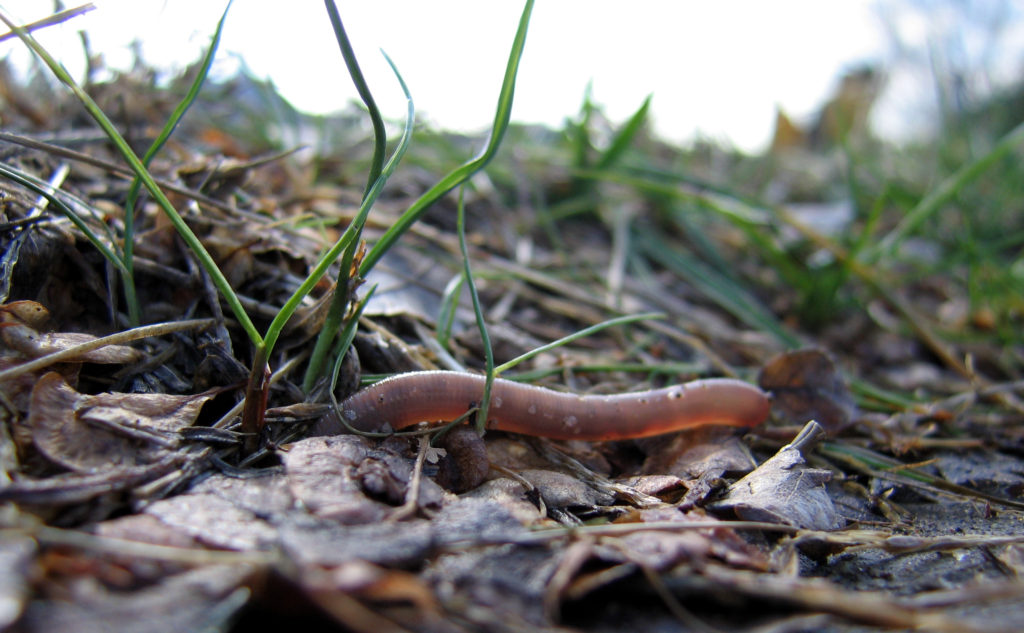
The decline of sugar maple trees has been observed for well over 50 years. It is not a specific disease or a syndrome but instead is a generalized set of symptoms that have been affecting these valuable trees in many areas for a long time.
A study at Michigan Technological University looked at the maple trees in more than 100 sites in Michigan’s Upper Peninsula over a period of several years. In those areas, the crowns of large maple trees were appearing unhealthy, with bare limbs and little new growth. Foresters were losing trees before they could harvest them. The suspected causes were drought, poor forest management practices, climate change, and various other factors.
But the research revealed that the most common factor among the afflicted trees was the condition of the forest floor. And the major influence on the forest floor is earthworms.
Earthworms gobble up the thick layer of leaf litter and other organic material on the ground, exposing bare earth. And earthworms especially like sugar maple leaves. Sugar maples are especially vulnerable to earthworms because ninety percent of their roots are in the top few inches of soil, so the trees rely on forest floor litter to keep from drying out.
Historically, this was not a problem because, surprisingly, earthworms are not native to the Upper Midwest. They have been brought in by people transplanting plants and on their tires and muddy boots as well as when anglers dump bait in the woods and waterways.
People can slow the spread of earthworms, but they are not going away. Eventually they will invade most sugar maple forests. But at least we are now aware of the problem and can try to take steps to make the forest more resilient.
**********
Web Links
Earthworms at the root of sugar maple decline
Photo, posted January 31, 2006, courtesy of Flickr.
‘Earthworms and Sugar Maple Decline’ from Earth Wise is a production of WAMC Northeast Public Radio.
I have observed for the last 12 years at least, the maples in southwestern MA have either thrip or anthracnose. The leaves in late August begin to turn brown and crusty looking and just fall. By the end of September they are bare. They used to be gorgeous yellow and gold everywhere. Every maple is effected here but especially sugar maples. Autumn has lost most of its color. I’m wondering if this will ever clear up. I know the trees will mostly survive this, but it really is sad looking.